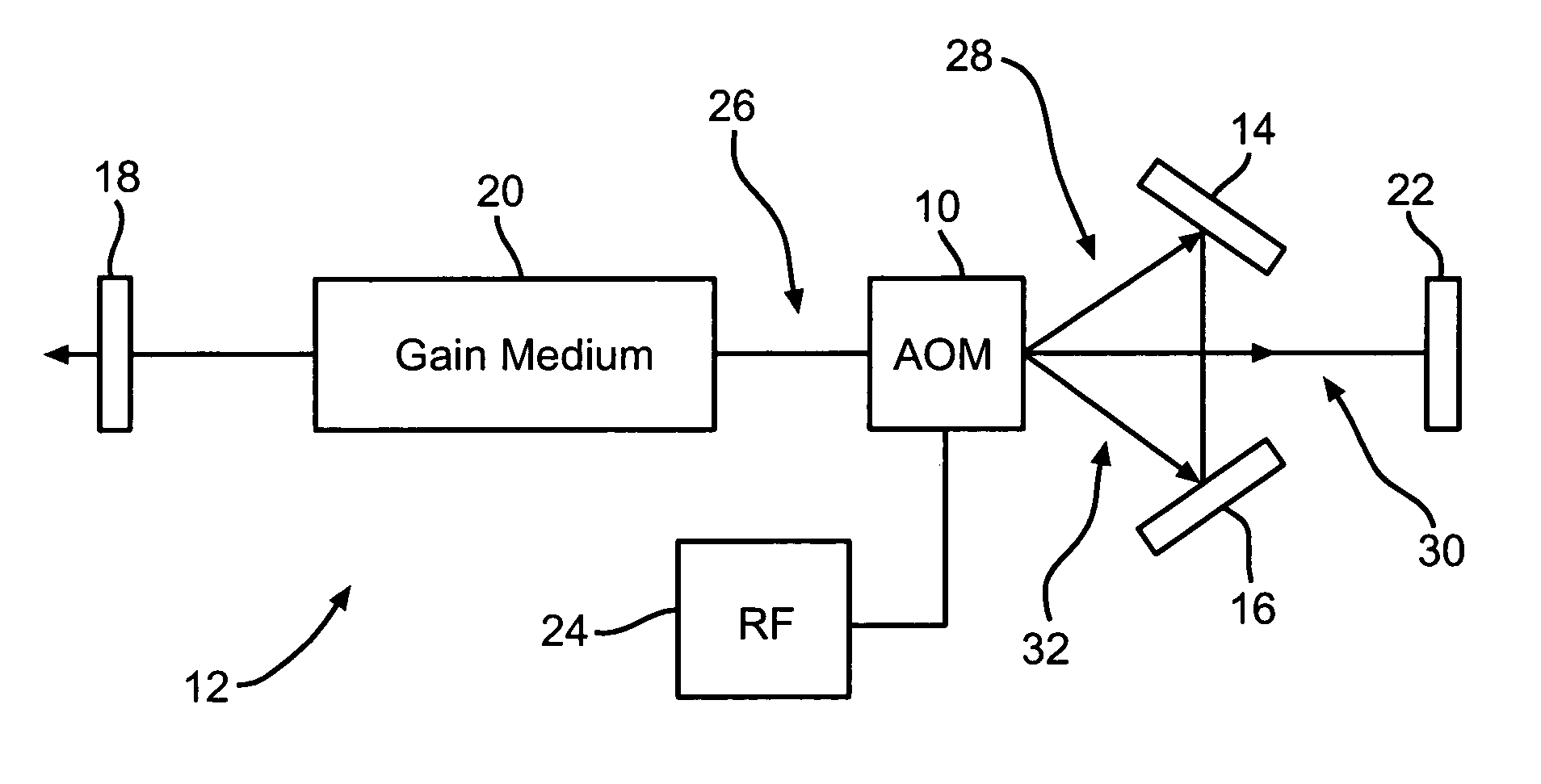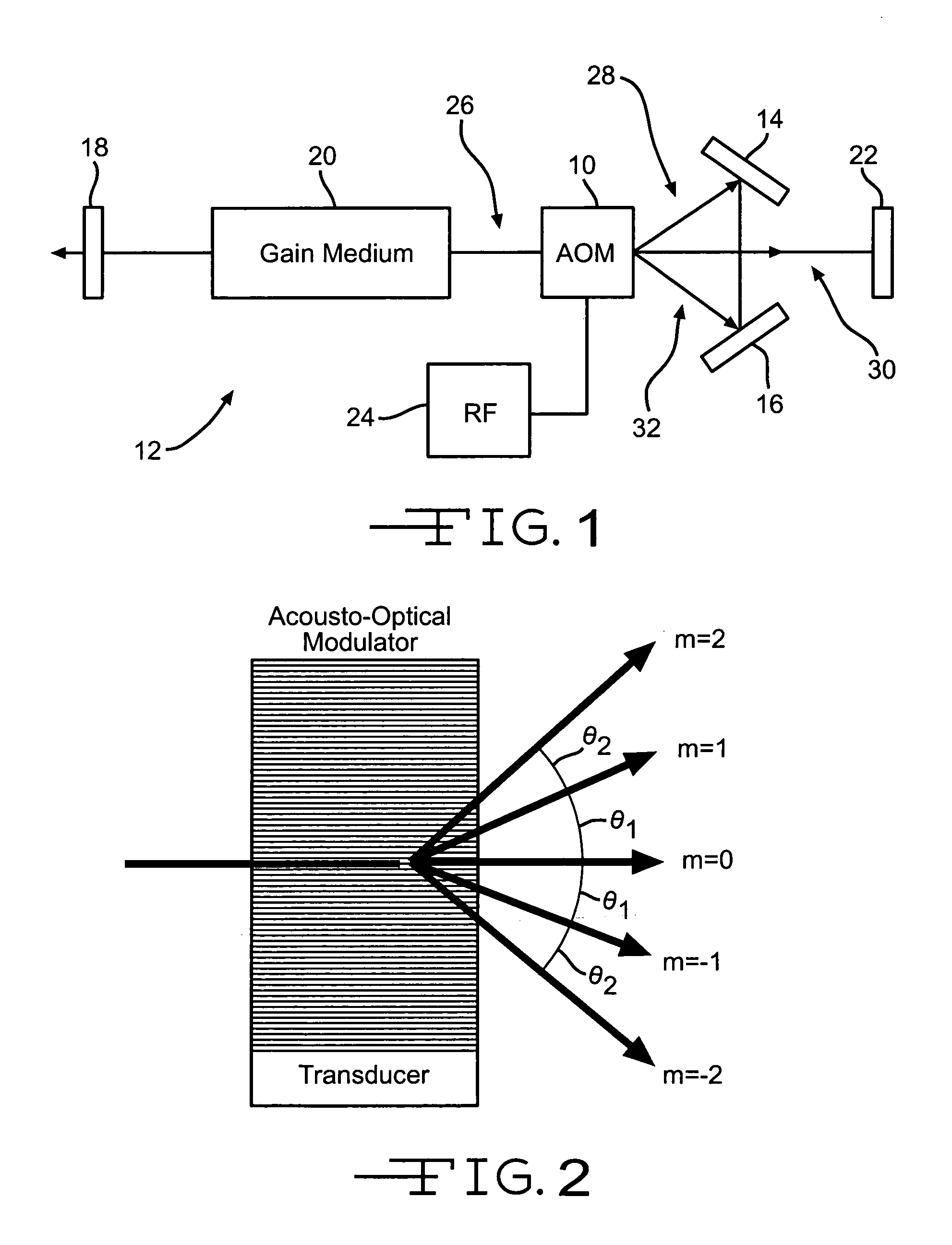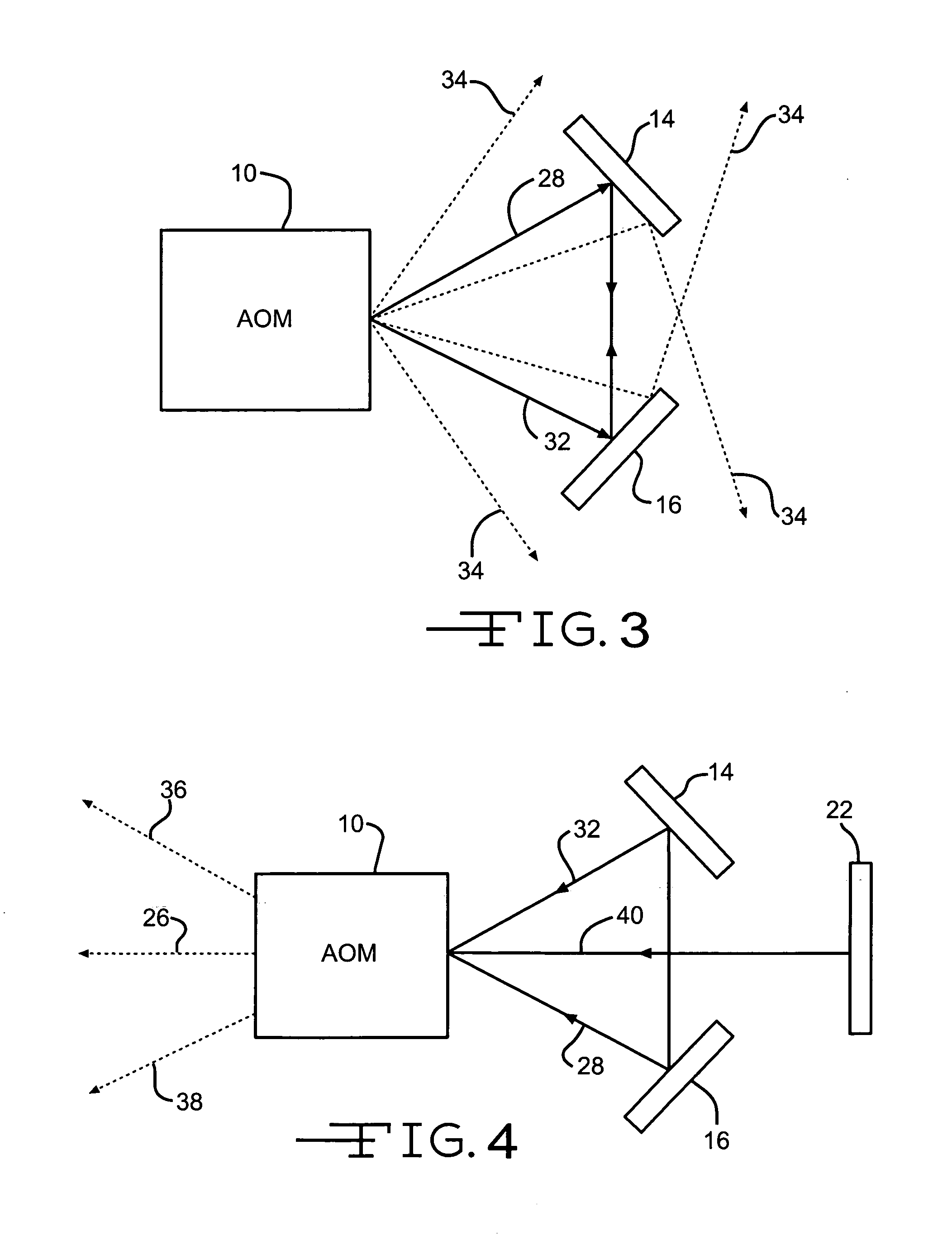Laser intra-cavity electronic wavelength tuner
- Summary
- Abstract
- Description
- Claims
- Application Information
AI Technical Summary
Problems solved by technology
Method used
Image
Examples
Embodiment Construction
[0012]The present invention, as shown in FIG. 1, uses a single acousto-optical modulator 10 inside a laser cavity 12, along with two additional optical reflectors 14 and 16, to cause the laser cavity 12 to lase at a one of a number of possible wavelengths. The laser cavity 12 consists of a partially-reflecting mirror (or output coupler) 18, a gain medium 20 (such as an Argon-ion gas cell), and a high-reflecting mirror 22. Alternatively, another mirror, such as mirror 22, could act as the output coupler. The type of gain medium is not critical to this invention, and any of a number of common gain media can be used, such as dyes, gas cells, solid state crystals, glass, chemicals, or semiconductors. In the example of an Argon-ion gas cell gain medium, the gain medium can support lasing at a number of different wavelengths: 351 nm, 454.6 nm, 457.9 nm, 465.8 nm, 476.5 nm, 488.0 nm, 496.5 nm, 501.7 nm, 514.5 nm, and 528.7 nm.
[0013]In order to select one desired wavelength and suppress any...
PUM
 Login to View More
Login to View More Abstract
Description
Claims
Application Information
 Login to View More
Login to View More - R&D
- Intellectual Property
- Life Sciences
- Materials
- Tech Scout
- Unparalleled Data Quality
- Higher Quality Content
- 60% Fewer Hallucinations
Browse by: Latest US Patents, China's latest patents, Technical Efficacy Thesaurus, Application Domain, Technology Topic, Popular Technical Reports.
© 2025 PatSnap. All rights reserved.Legal|Privacy policy|Modern Slavery Act Transparency Statement|Sitemap|About US| Contact US: help@patsnap.com



